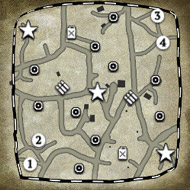Lev Abramovich Isakovich tells his story
The single player campaign of Company of Heroes 2 will deliver a cinematic perspective of the events of World War II. You will follow the invasion of the Nazi forces on Soviet territory. As the campaign stretches into the winter of 1941, adverse weather and deep snow become more and more of an obstacle for the aggressors. Company of Heroes 2, as we are going to see in detail, is able to reproduce the conflict in an incredibly realistic way, offering the player a sense of continuity and identification with the events.
The story is delivered via the narrative device of the flashback. The protagonist is Lev Abramovich Isakovich, a Russian Lieutenant who tells us what happened during the war while in a prison camp in Siberia. We are in 1952 when Isakovich is interrogated by an high grade officer of the Red Army. The cinematic structure was built in a way that players have the impression they are watching a film about World War II.
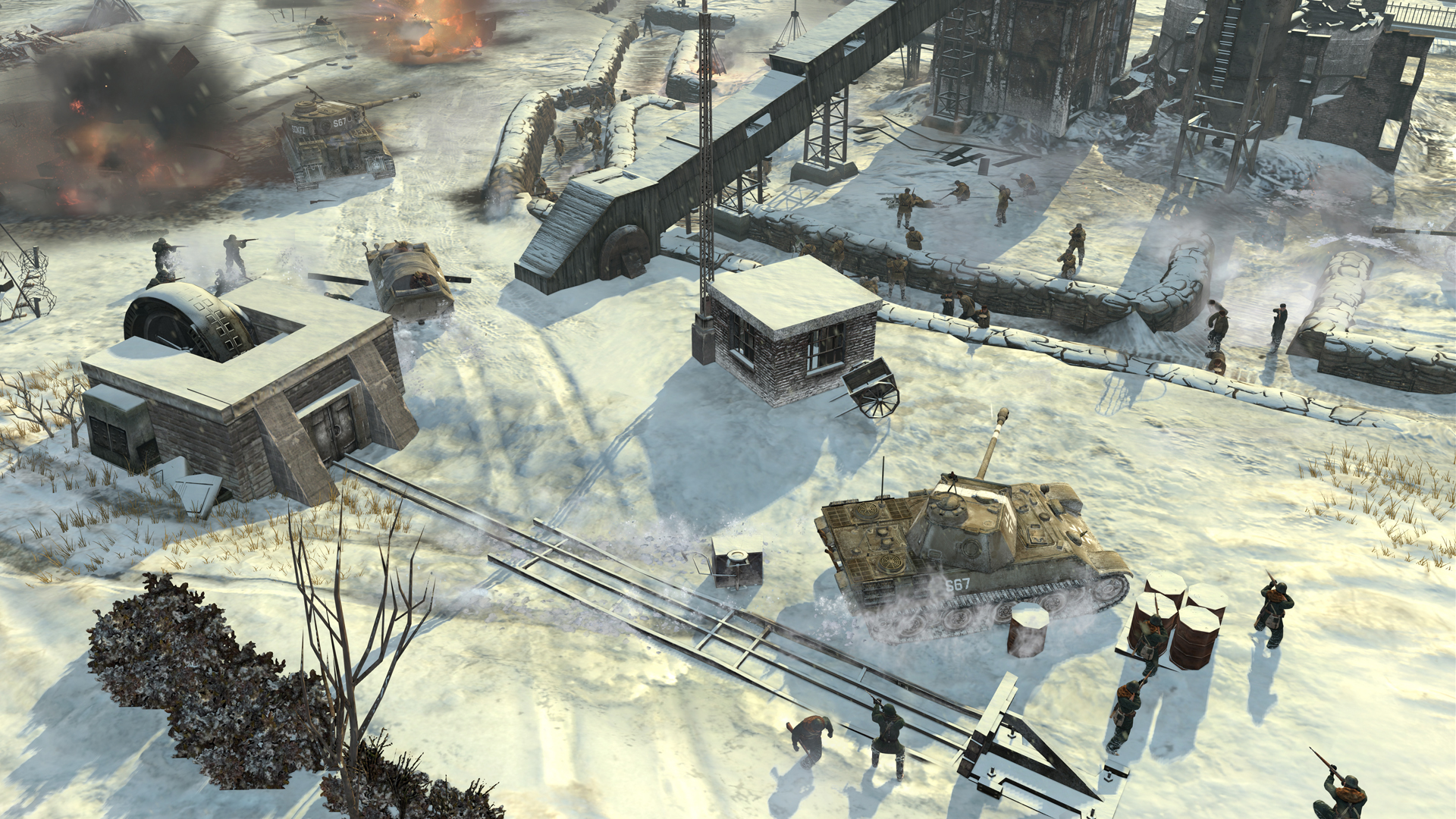
The narrative sequences are pre-rendered, even if built from the in-game engine. They aim to transmit credible feelings through facial expressions of the characters, although not reaching the level of photorealism of games like Tomb Raider or Heavy Rain. The musical accompaniment is significant, with a series of tracks well-suited for the mood of the story. It is an intense search for artistic and historical context.
Within the stories of the Lieutenant, there are more flashbacks. For example, the first mission lies chronologically after the second. It follows, in fact, a Soviet attempt to recapture Stalingrad after it had fallen into the hands of the Germans, as seen in later missions. The narration itself is quite free and the presence of the flashback experience allows it to point out the atrocities of WWII without having to take anyone's side. Both the Soviets and the Nazis, in fact, will make actions during the conflict that go well beyond any moral code, and Relic's narration will not fail to point out the facts most abhorrent and unjustifiable.
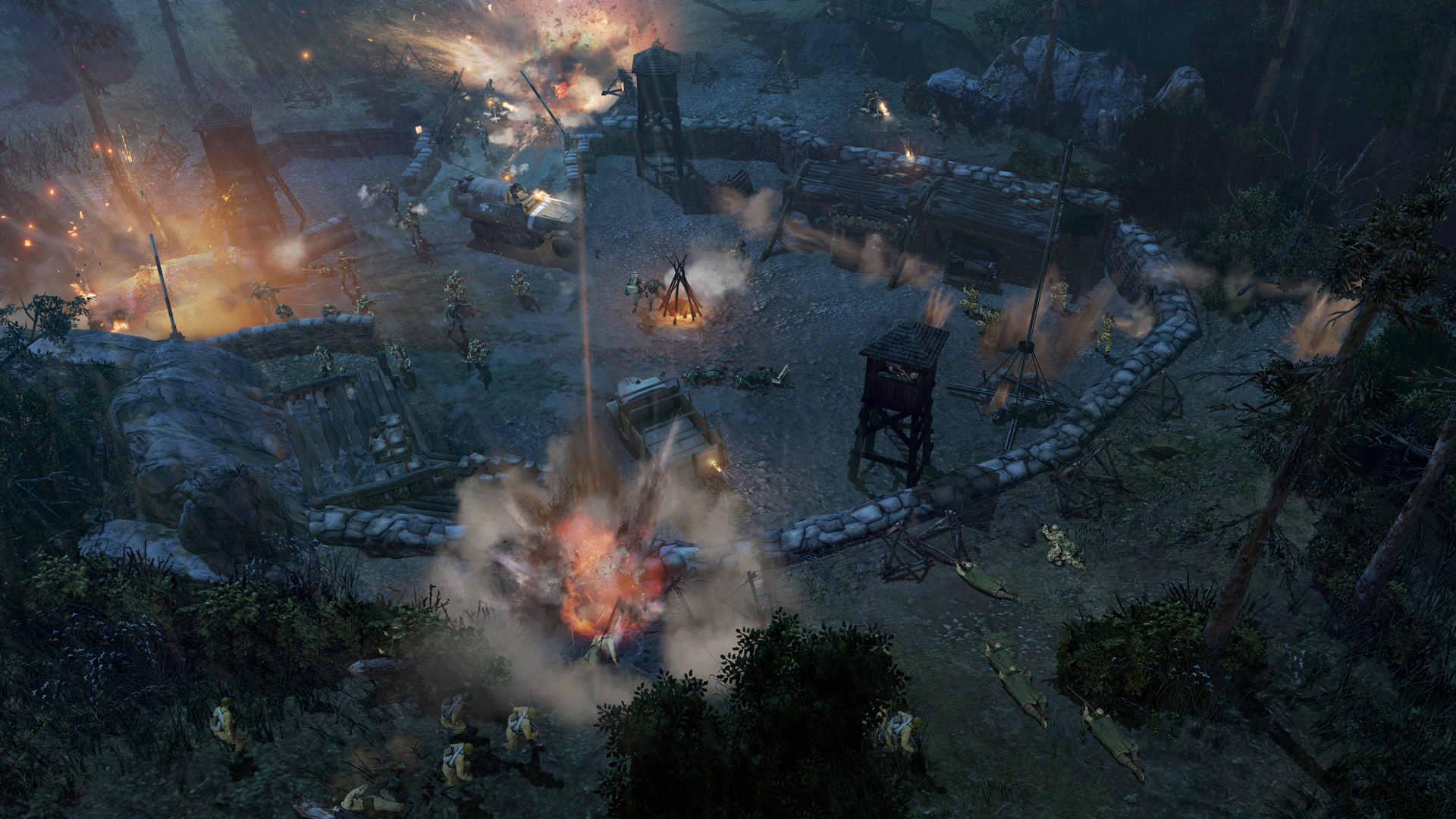
The new single-player campaign follows Operation Barbarossa. This brutal conflict proves to be the perfect time of World War II for Relic to build it's RTS. The ultimate goal of the Canadian developer is to represent faithfully and realistically this dramatic moment in history.
Russia and Germany, as history teaches us, signed a non-aggression pact on the eve of World War II. The Molotov-Ribbentrop Pact was signed on 23 August 1939. Hitler, however, soon became concerned about the expansion of Stalin and saw the eastern front, while the U.S. were not part of the conflict directly, as an opportunity to vent the potential of his huge army, also equipped with great opportunities to move. Operation Barbarossa begins June 22, 1941, taking Stalin by complete surprise.
During the campaign, the German forces lose energy, resources and strategic precision because of the increasingly adverse weather conditions. Precisely for this component, Relic intended to rebuild war scenarios in a very detailed way, returning through the Essence Engine 3.0 weather change and the dynamic change of the battlefield as fire fights proceed. Apart from the Soviets, the German army had been defeated by the Russian Empire in the nineteenth century and even then you can say that they have lost in both cases because of the hostility of nature. Stepping back, in fact, the Russians put the physical fortitude of the Germans to the test. But the order is always to proceed to the bitter end, and that's why the German soldiers soon became the sacrificial victims on the altar of irrationality.
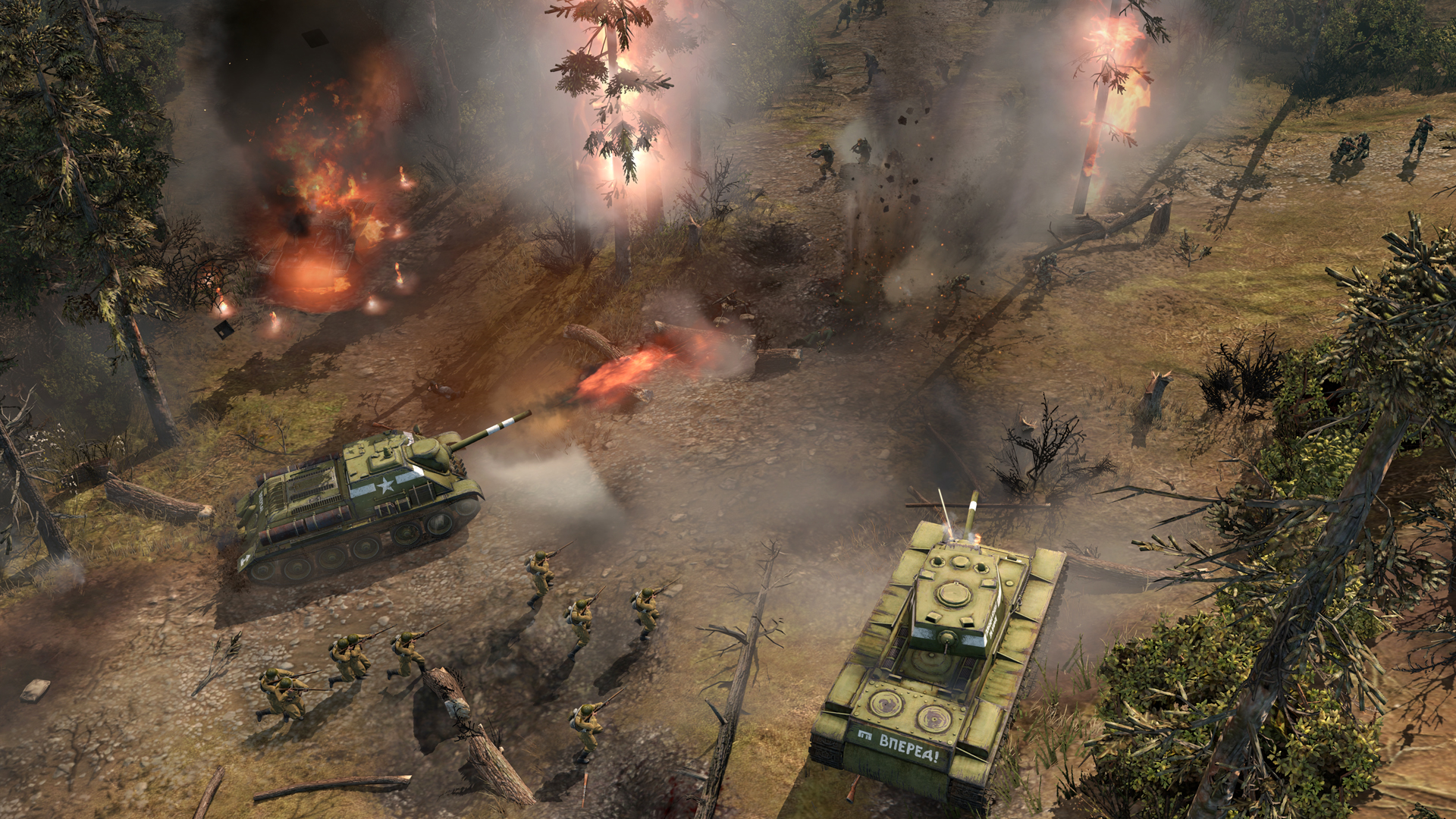
Another example of this is the so-called Order 227, issued by Stalin to encourage his troops not to leave the battlefield. "Not one step back" is the motto that was behind this order: if a Russian soldier abandoned the front he was killed by other soldiers of his own faction. At many points in the single player campaign, the story focuses on the Order 227.
On the battlefield, you will hear many words that start with 'F', but the most important one is 'Flank'
The game mechanics of Company of Heroes 2 remain almost unchanged compared to the first game of the series. The most important changes are dependent on new technologies, "True Sight" and "Cold Tech," which deal respectively with the dynamic management view of the soldiers on the battlefield, and with the real-time accumulation of snow on the ground.
Like the original game, success relies heavily on the protection of the infantry and the exploitation of cover. The player does not handle individual infantry units, but entire platoons, and his first concern is the deployment of these platoons according to the characteristics of the scenario. Almost all of the objects on the map provide some level of shelter. When you are about to deploy a platoon, you are notified with a shield as to which level of cover will benefit your troops. If it is green, this means that the troops will be fully protected once they reach their destination. If yellow, they will have average protection, and if red, they will be exposed to the fire of the enemy. Each cover is directional, meaning that it can protect soldiers from one side, but leave them uncovered on the other, making them potential victims of flanking actions. Some cover, however, such as craters or trenches, protect soldiers from any direction.
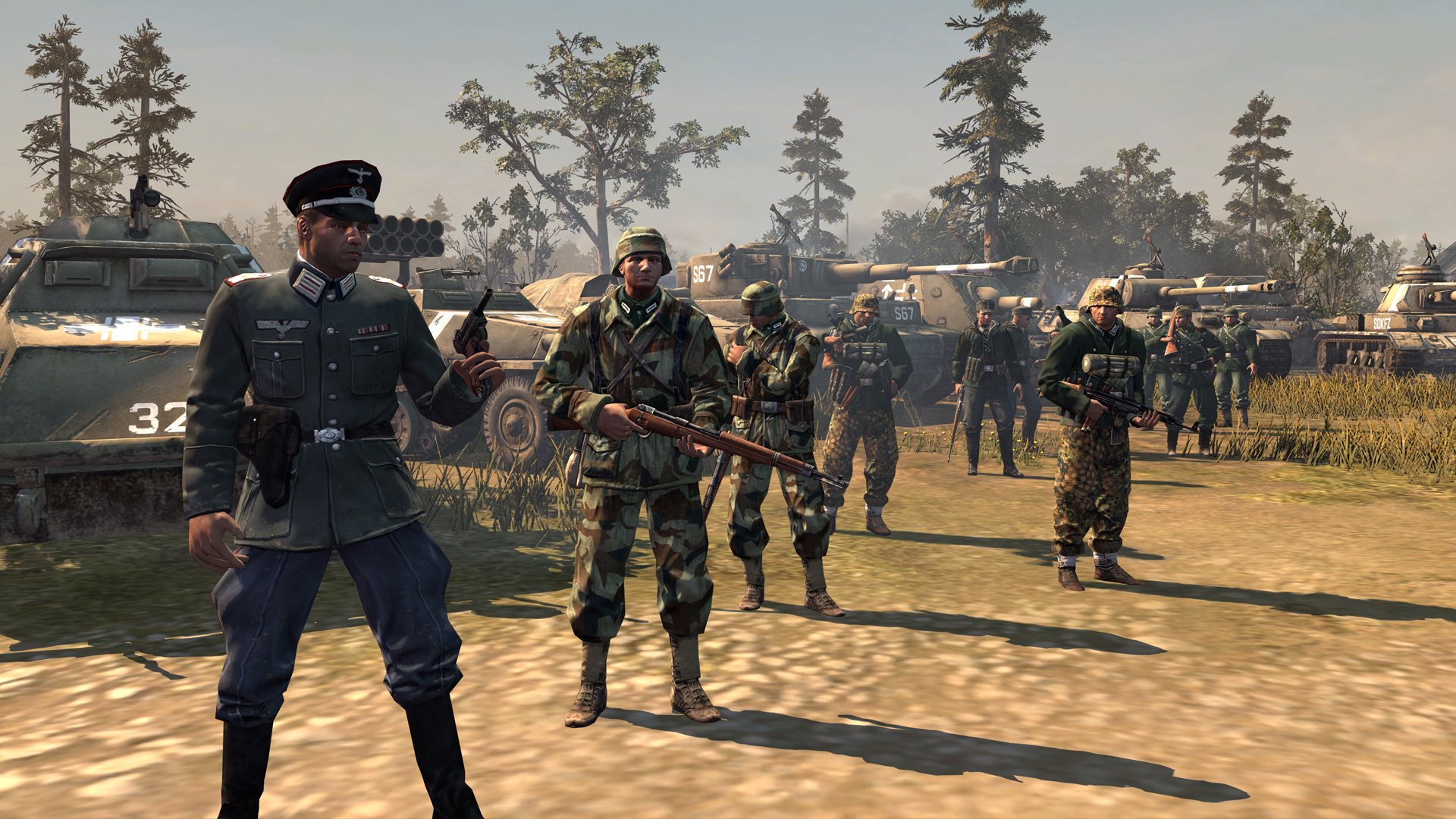
Flanking actions are necessary for success. The player must avoid the direct fire of the enemy and move troops to circumvent barriers. The tactics available to the player are varied, and depend almost always on the layout of the map. For example, you can use the smoke grenades to prevent the enemy from following the movements of your troops, or use fragmentation grenades to damage the trench from which the enemy is firing.
The component of the climate conditions are an absolute novelty to Company of Heroes 2, justified by the real historical settings. The troops, in fact, suffer intense cold and often die from hypothermia. The player, however, has three ways to protect his units: garrison buildings, board vehicles, or light campfires. You can then check the weather in a dynamic way, as storms and strong winds completely undermine the visibility on the battlefield and put a strain on the strength of the soldiers. Ice can break under the weight of heavy vehicles, or if hit by mortars.
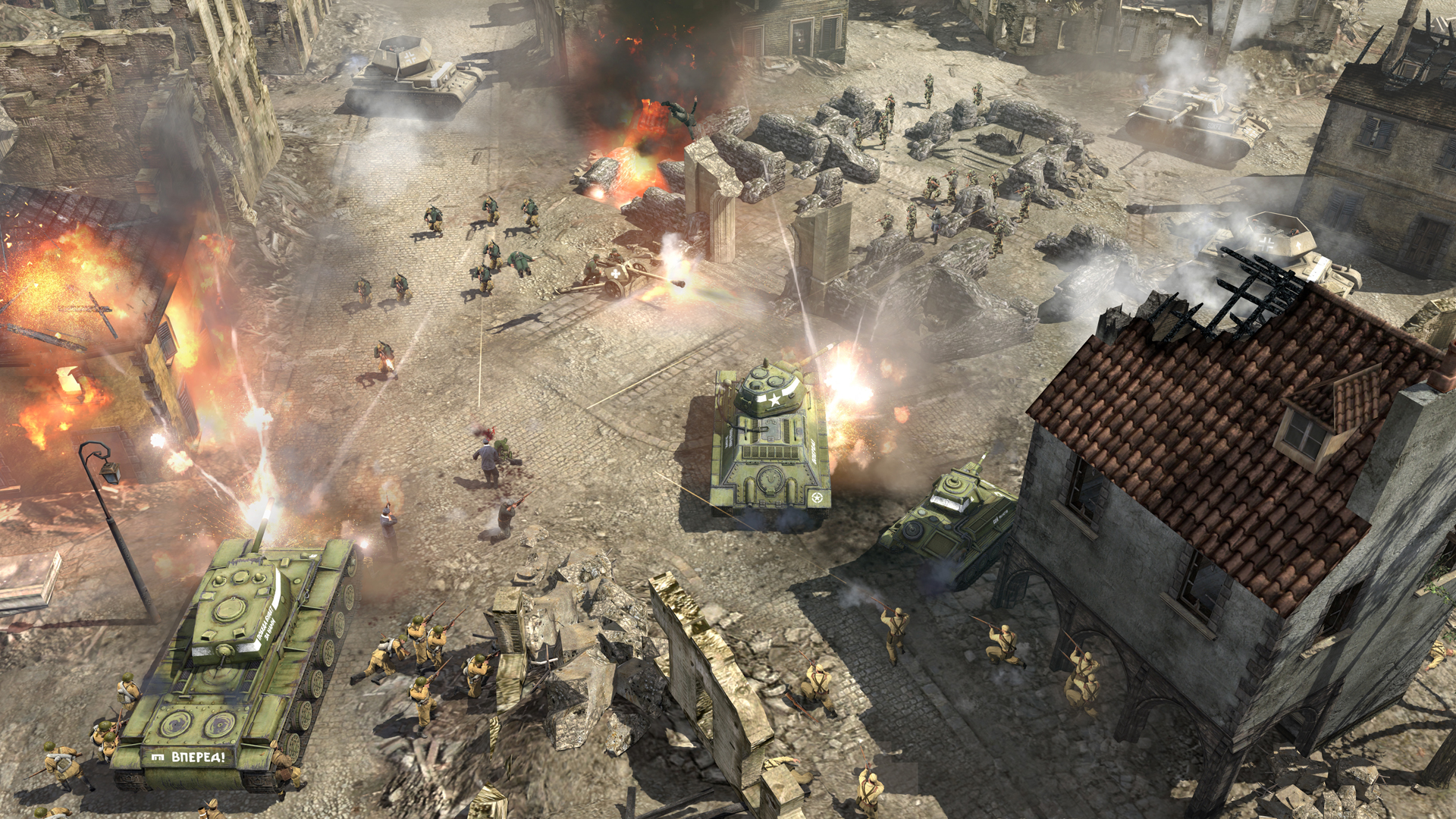
Engineers can be equipped with flamethrowers to burn down buildings, besides being able to build defensive structures like bunkers or even dislocate mines on the battlefield. The defensive structures are fundamental in Company of Heroes 2, to tell the truth especially in multiplayer, because they prevent the enemy soldiers from walking freely through territories.
Knowing the area, therefore, is crucial in the war. This becomes even more important due to the new technology of True Sight. Each object affects the view of the soldiers, which is dynamic because it depends on explosions, smoke and other moving objects. For example, a building or vegetation may hide the movements of the enemy soldiers that are behind it, as the smoke of an explosion or a snowstorm could force the troops, and consequentially the player, to proceed almost blindly.
Key word "dynamism"
The first mission of the single player campaign of Company of Heroes 2 takes place in the railway complex of Stalingrad, while the Soviet troops are trying to retake the city that has fallen into the hands of the Nazis. We find ourselves in September 1942. Stalingrad is modeled with the utmost attention to the level of detail: you can see the wounded soldiers carried off on stretchers, the trenches are accurately reproduced and you can even see objects that remain in homes damaged by artillery fire.
This first mission serves as a tutorial. The player manages only a couple of platoons, while the war rages around them, with dozens and dozens of units from both factions managed by the AI. You have to penetrate into the city by weakening the resistance of the Germans, initially by eliminating a fixed machine gun, and then by blocking the movement of an enemy tank.
We must emphasize the incredible dynamism of War that Relic has reproduced both visually and physically, since practically every object on the map is subjected to destruction. In addition, the secondary objectives will add up quickly when you have to, for example, free or escort a convoy of civilians in difficulty parallel to the main objective.
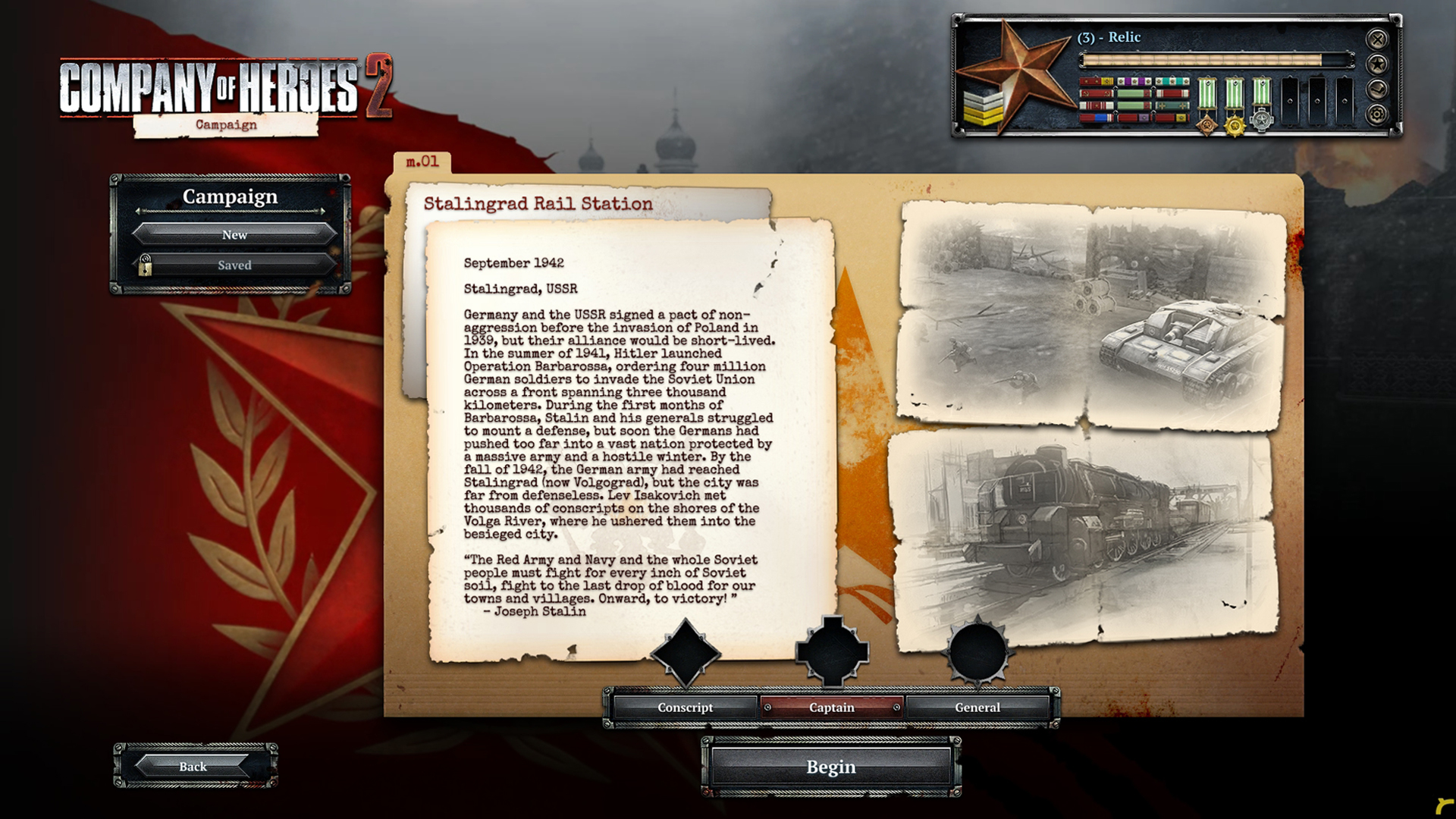
While you unhinge the defenses of the Nazis, you may be required to release the civilians who are held hostage in a building. You need to take out the German soldiers who lie at the base of the building, to allow the civilians to flee. But if we cannot clean the area within a certain period of time, the secondary objective is failed, and you have to go back to focus on the main objective. The presence of an unforeseen danger, therefore, reinforces the feeling of dynamism that is definitely the protagonist in the single player campaign.
You fight in conditions of great excitement and confusion, appropriate for a conflict of this scale. If in multiplayer this excessive level of confusion could be considered a defect that was to the detriment of competitive gaming, the excitement in the single player manages to make the game more realistic and immersive, creating an enjoyable and fascinating experience. The player also has a sense of the continuity of the conflict, corroborated by the excellent auditory presence and by the fact that the missions are very long and concatenate several objectives, without apparent interruption.
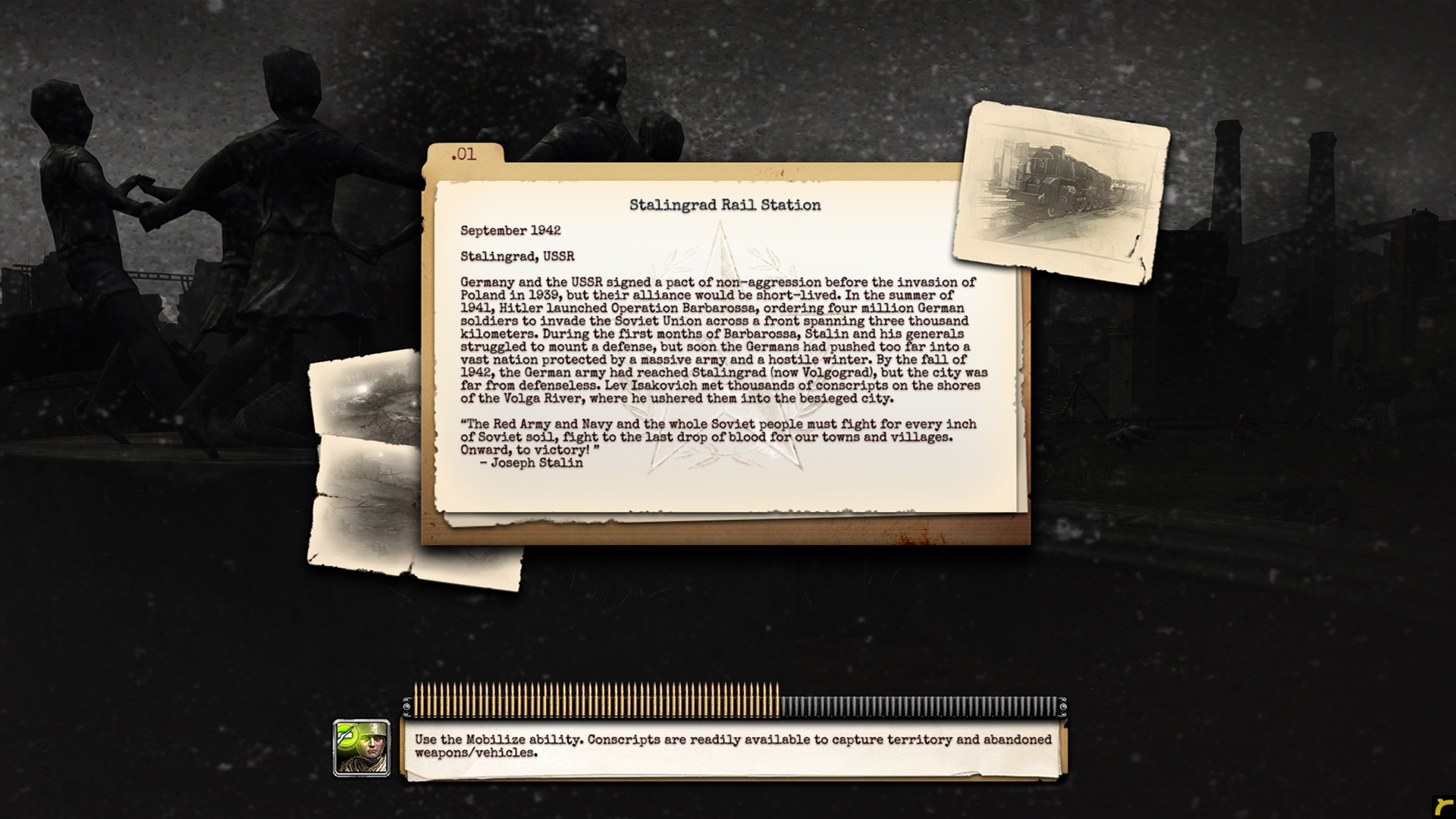
Relic has done an excellent job with the soundtrack and sound effects. Every object on the map, whether it is a piece of artillery, a vehicle or a soldier, has its own character in the soundscape. Depending on the position of the camera view, far away sounds will be subtle, while near sounds can be deafening. The artillery, aircraft, and also conventional weapons of the soldiers, all emit a sound utterly believable that immerses the player even further into the conflict.
After this first mission, you go back in time and follow the experiences of Lieutenant Abramovic Isakovich in the conflict against the Germans. From this point onwards there is almost always a setback mission, which gives the player special taste, since you can carry out the mission even if the Germans invade the entire map.
The second mission is set in September 1941 in the countryside around Moscow. You are tasked to protect control points for as long as possible, before they fall into the hands of the Germans. While falling back, you must set fire to some units so that the Germans do not commandeer them.
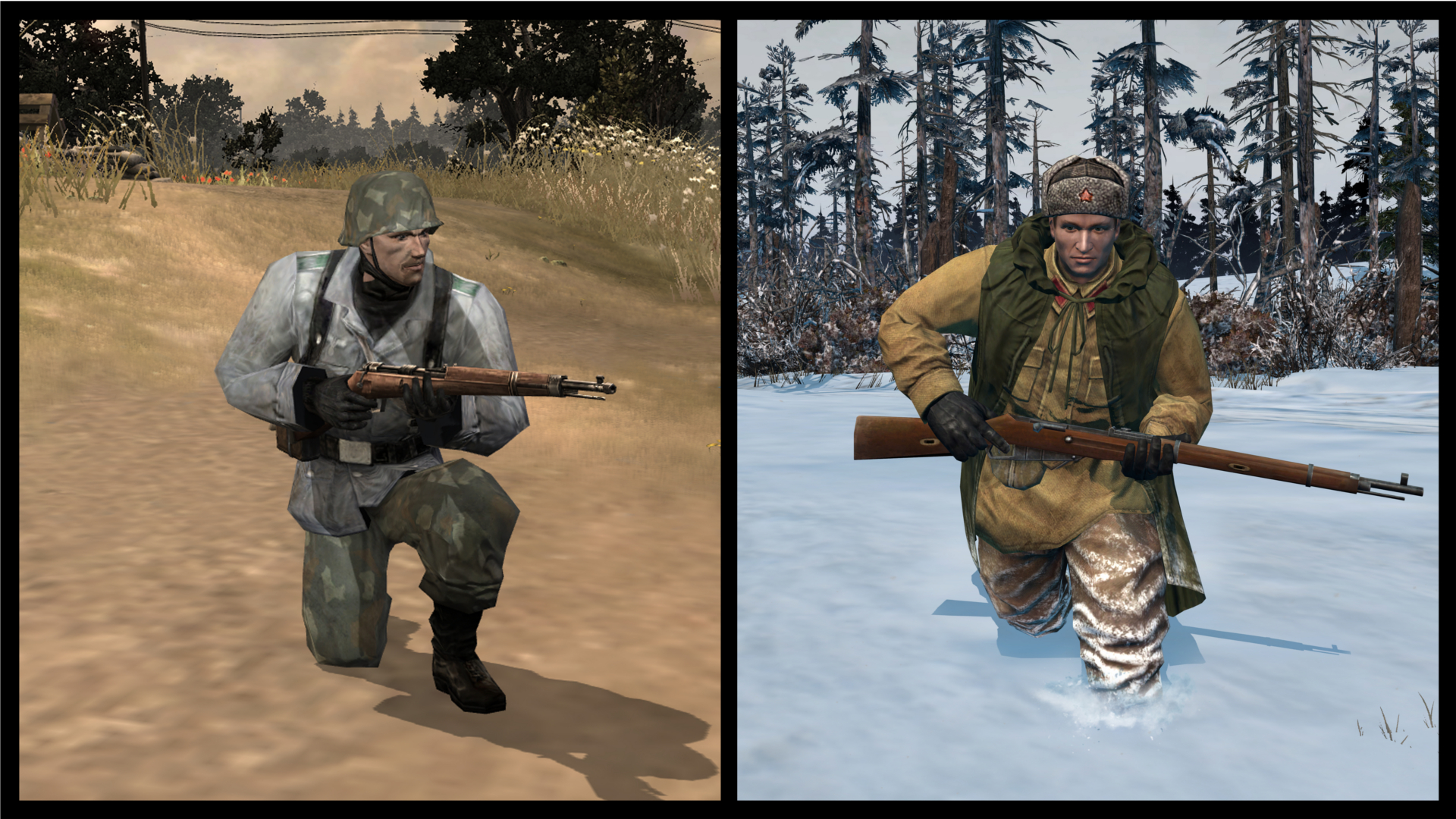
Control points are captured standing in a perimeter and raising a flag. Each control point allows you to increase your of resource income. As usual, there are three types of resources in Company of Heroes. Manpower allows you to recruit new teams of infantry, new vehicles, and new tanks. Ammunition is used to purchase upgrades for units, so as to make them more competitive on the battlefield, and to use the special abilities of which are equipped soldiers, such as throwing grenades. Fuel is used for the distribution of heavy vehicles, for the construction of facilities, and the purchase of upgrades. Owning the areas on the map is therefore crucial to have an army strong enough to counter the enemy's advance, and yes this is true for the single player, but more so for the multiplayer.
In the third mission we finally see a bit of snow, but not so much that it represents a real obstacle for the soldiers. They are located about 60 kilometers from Moscow, in a place called Mtsensk, in October 1941. As in the previous mission, you must defend against the German advance, and for the first time in the campaign, the conflict moves from infantry to heavy armored vehicles. Artillery units start to have significant influence, but despite my efforts, our forces eventually succumb and retreat to the suburbs of Mtensk.
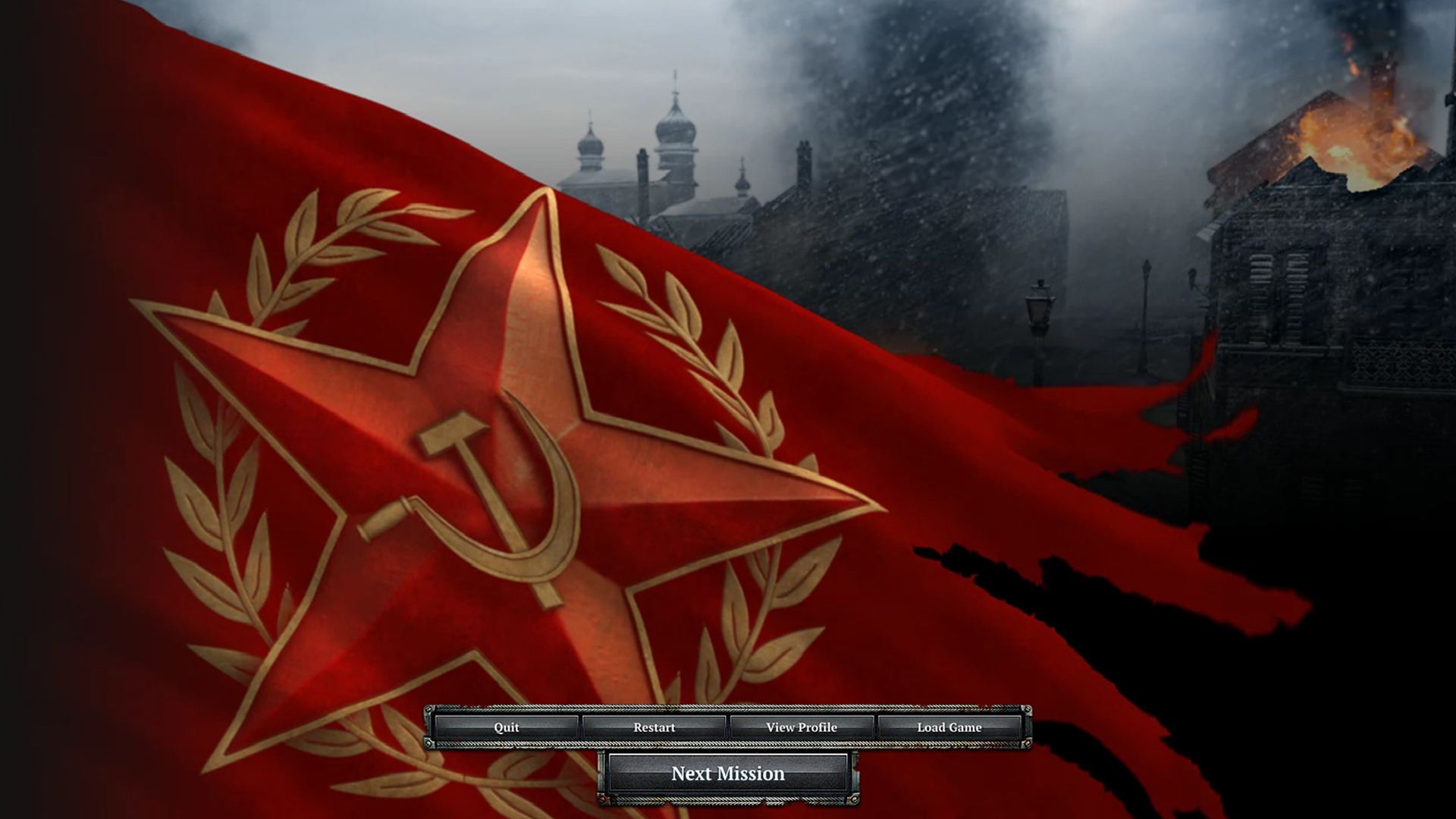
This mission is far more complete than previous missions, which allows us to verify that it is essential to preserve our armored vehicles, which become very difficult to break down for the infantry, unless they are equipped with suitable armor. Each vehicle has weak points and may be deprived of some mechanical components, which may prevent them to continue to move or to fire.
Stalingrad at night
The next mission presents an even greater challenge. If you do not use the available resources well, you cannot bring the mission to fruition. You fight in Stalingrad at night, in a scenario very addictive and pleasing to the eye, showing off the excellent work done by Relic in terms of the lighting system.
The symbolic city of Stalingrad was a key battleground for more than five months in the autumn of 1942. Those months were characterized by urban warfare, the bombing of the Luftwaffe and the dangerous crossing of the Volga River. The situation was complicated by the Order 227. And the whole thing is beautifully summed up in this great mission.
We need to gradually conquer the sectors in the hands of the Germans and destroy their artillery, which are located at the edge of the map, to protect our armored vehicles. Available to us is the nimble Scout Car, which can be equipped with soldiers with SMGs, able to produce a barrier of fire hardly sustainable by the enemy. But the map is very large and it becomes impossible to venture out our troops in places where we do not have visibility. For this reason it is best to think of the barrage, using the Katyusha.
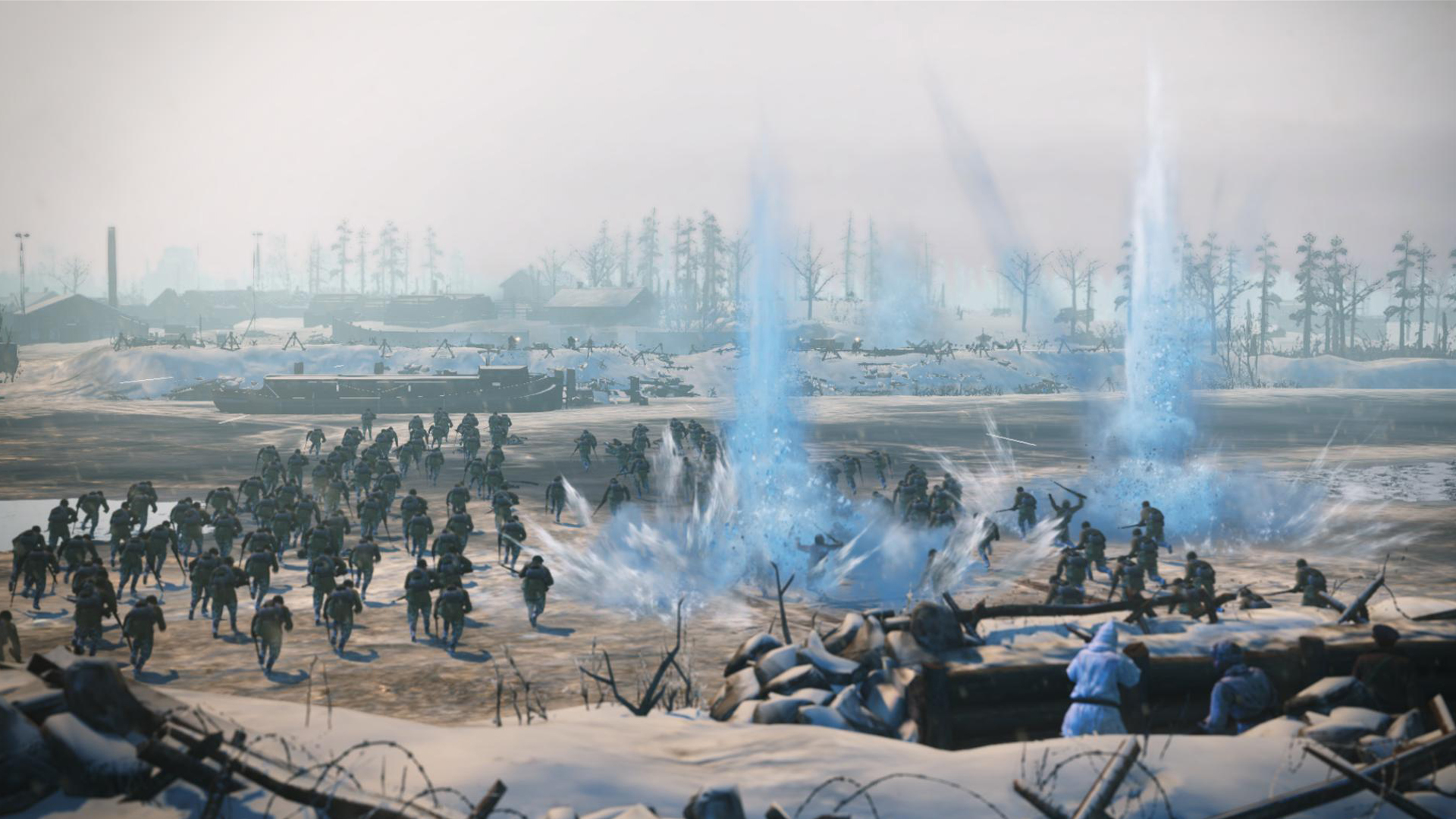
The fire of the Katyusha is powerful but not accurate, especially against infantry. In fact, you do not always manage to hit all the soldiers present in the designated area, while it is obviously much easier to hit a vehicle or a building. The Katyusha are critical to altering the balance of play in this map, and they are spectacular, because they are able to literally tear the map to pieces, since practically everything is subjected to destruction. If a building stands in the way of the rockets, they plunge into it with spectacular effects and the structure is destroyed.
Things get complicated when we have to cross two narrow bridges, to which the Germans send a considerable amount of units. In this case you have to make the most of available resources, protect as much as possible and arrange units deployed effectively. The T-34 tanks are fundamental to oppose the enemy, equipped with machine guns and platoons bearing panzerschreks.
Once we break across the bridges, things get a little easier. We now have access to the IL-2 Sturmovik. To unleash the planes, unlike the Katyusha, we must have visibility over the area we decide to attack. A dense hail of bullets, very effective especially against foot units, rain down from the plane that circles above. Thanks to the support plane, it was not difficult to use the Katyushas and T-34s to penetrate the German base.
Outgunned
The last mission that we were allowed to try will eventually be the eighth mission in the final game. It takes place in January of 1943, when the tide of the war begins to change in favor the Soviets. We are located in the countryside around Leningrad, with a strong presence of snow. In this mission we see how projectiles affect the snow-covered terrain by physically moving the snow to a different extent depending on the weight of the bullet itself. But the soldiers interact with adverse climatic conditions, because their pace is slowed as they trudge through, leaving their footprints as they go.
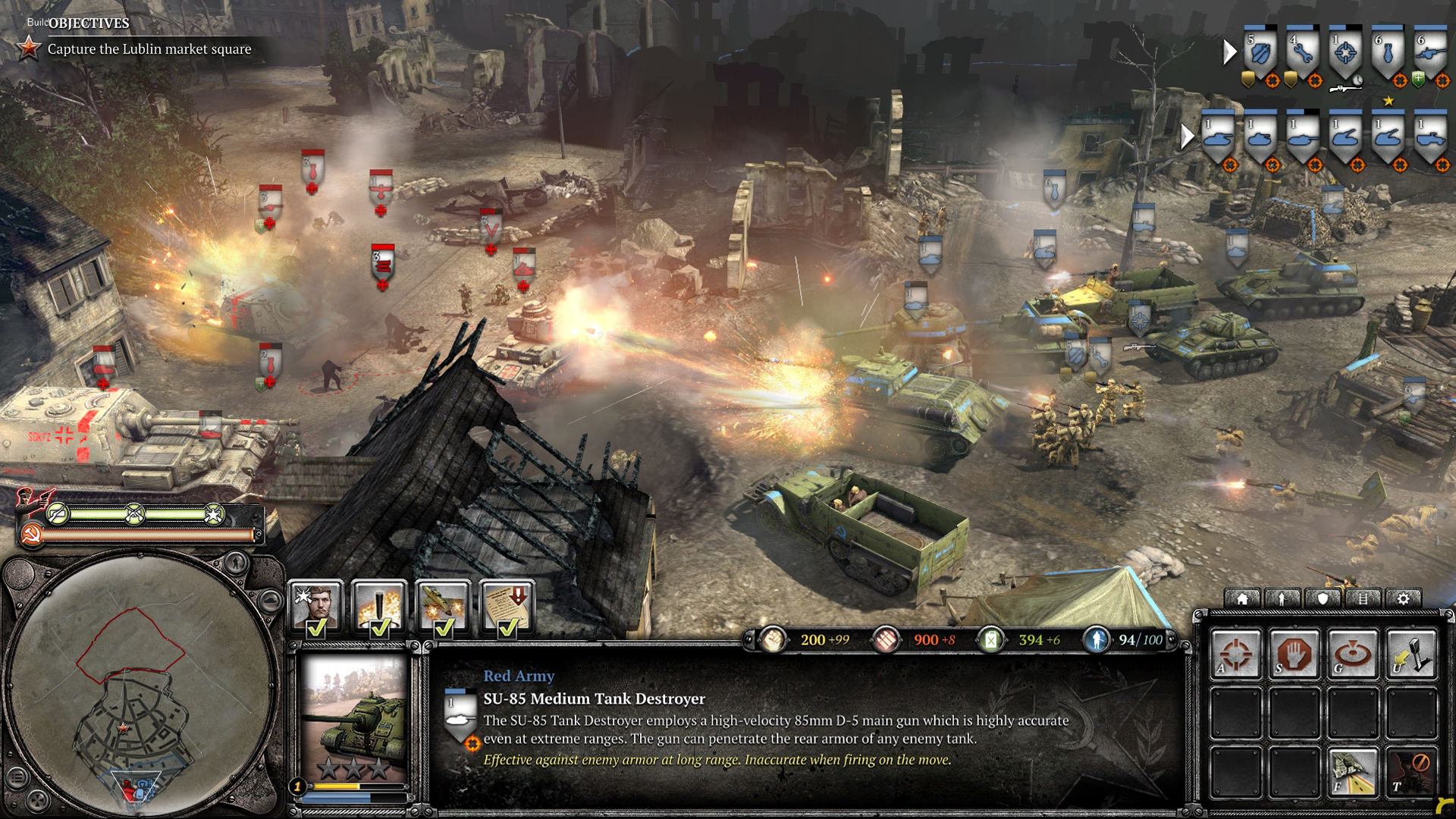
You have to escort a convoy of vehicles until they inevitably fall into an ambush of the Germans. At that point, all Soviets vehicles are destroyed quickly and only the infantry survive. To our horror, we are confronted with a mighty Tiger. It is a unit that is virtually un-killable. The player must learn various techniques to use weaker units to counter this beast bit by bit. Destroying this Tiger is not easy and you have to use the map in its full extent in order to escape it's main gun and at the same time find a station where you can attack it from the flanks.
There are two anti-tank artillery units in the lower left and top left corners of the map. But you have to also use anti-tank guns, explosives and grenades if you want get the best of the Tiger tank. We are in a phase of the conflict in which the Soviets begin to subvert the balance and, grabbing some Nazi weapons, pack a powerful counterattack on their opponents. In this mission, therefore, we will capture the Tiger and use it against the Germans.
First and foremost are the repairs. It's a complex and long-lasting operation, during which the Nazis mount an attack. Players must then protect the middle, because the Germans have set up an additional base of operations, fully guarded by armed units. We can not deliver reinforcements at the location of the Tiger, unless we are able to attack the Nazi base that is located in between.
But the Soviets are now too strong, they are able to repair the mechanical beast, to make their way through the Nazi forces and bring the vehicle into the Russian base.
Essence Engine 3.0
Relic Entertainment has extensively revised its Essence Engine technology for Company of Heroes 2, bringing it to version 3.0. We could see the presence of so many polygons on models, fine particle effects, precise destruction and spectacular effects in post-processing. Compared to the multiplayer beta tested in the past few days, this version had much better lighting, due to the many new sources of light that were not there before.
In this case, the lights issued by Katyusha rockets are spectacular. The lights impact all polygonal models that are nearby, producing new shadows and new reflections. The destruction then spreads over the whole map, which appears in a completely different form at the end of the mission compared to the start. The buildings, for example, sufficiently weakened, collapse upon themselves.
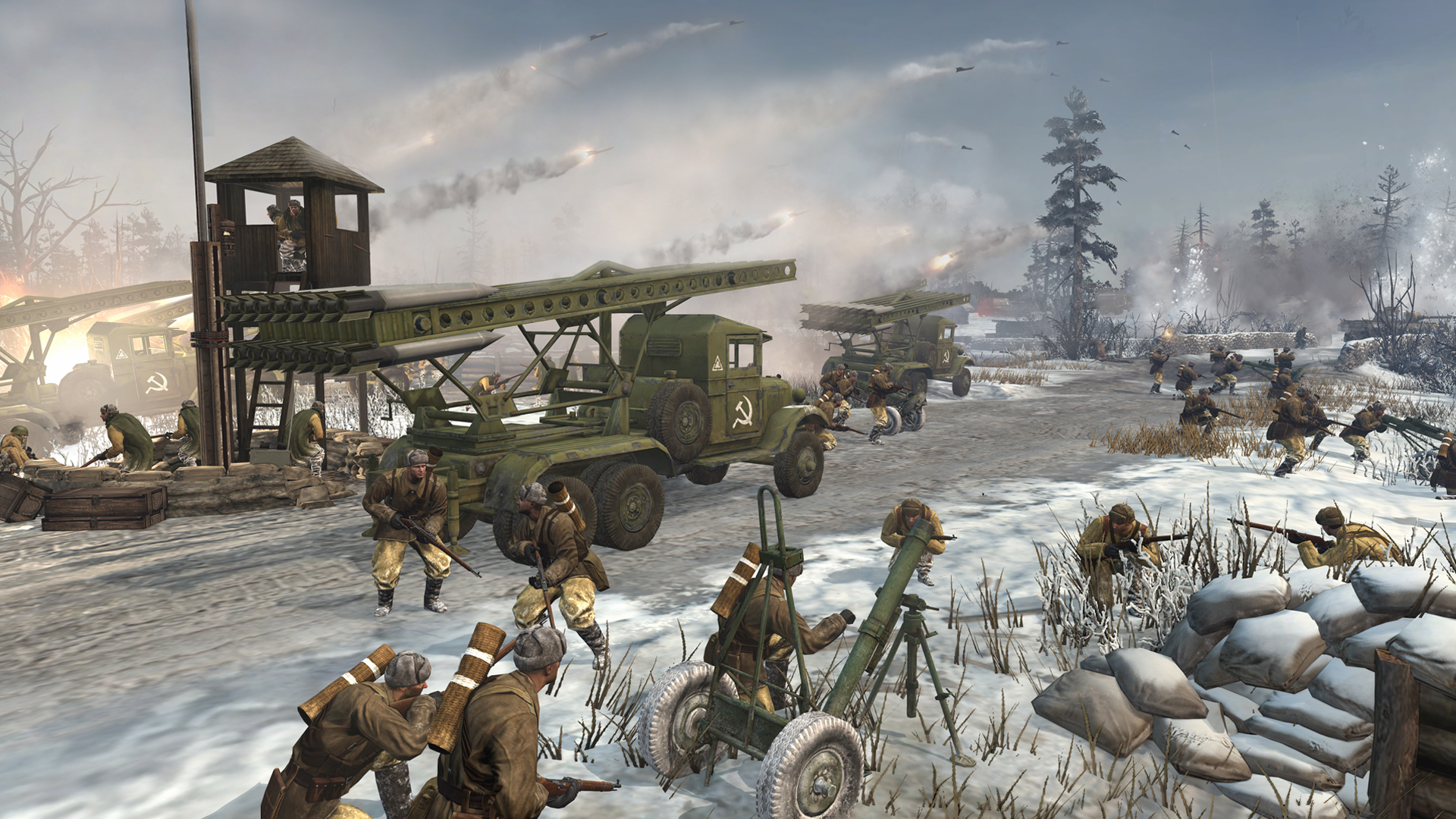
The physics of Company of Heroes 2 is staggering. For example, the ragdoll effect that is calculated on each of the soldiers when they have lost their lives, as they are thrown away by the explosions, or as they fall from the higher floors of buildings. The flames are just as realistic, since it can ignite the buildings from the inside and explosions can occur on a large scale. The armored vehicles also suffer the effects of recoil, calculated dynamically, when they fire their main cannons.
All of this is in addition Cold Tech: even if, unfortunately, the new technology is not fully present in the single player demo that we played. But you can see how the snow moves when it receives very strong blows or as forming impressions of the soldiers when the snow is trampled. In the final version of the game, Cold Tech should be even more spectacular, with the effects of snow accumulation, particle by particle, and dependent on the tide of the war and of the climate.
The multiplayer beta as well as this single player test only supported DirectX 9 graphics. We expect significant improvements to the graphics output of the game from here. Relic has still got some surprises up their sleeves. DX11 should be a significant improvement.
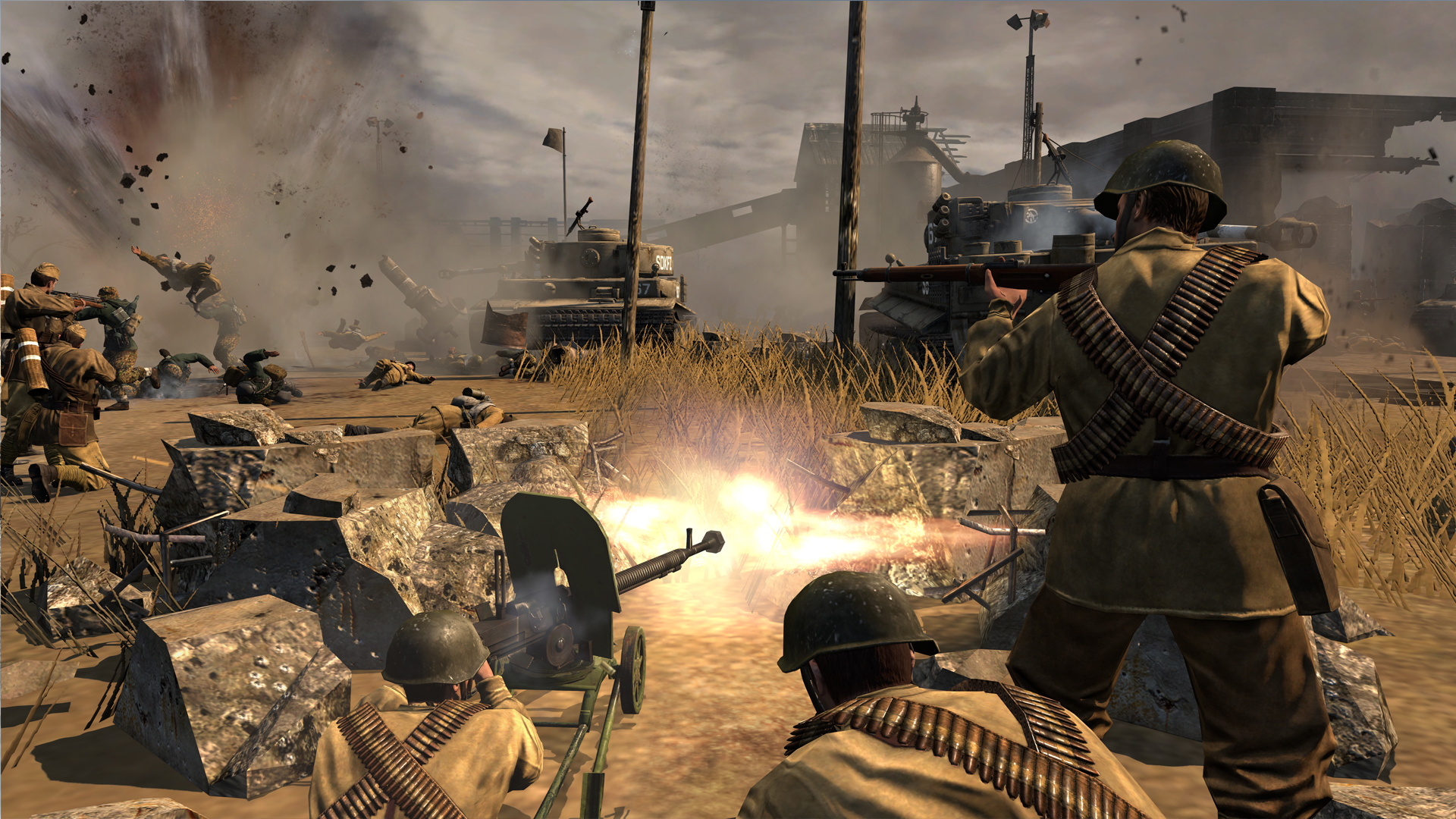
This single player beta wss a significant step backwards with regards to performance. We tried the game on different configurations, but the results do not change substantially. Even changing the resolution had little effect, as if there was something not fully optimized. With an Intel i5 2500, 8GB of RAM and GeForce GTX 660 graphics card, you we could not, in almost any circumstance, to go beyond 30 fps. The same computer could run the multiplayer beta at 60fps. This probably depends on the new lighting system and the greater complexity of polygons that is in the single player campaign. We expect improvements and optimizations before the final release.
Considerations
First contact with the single player campaign for Company of Heroes 2 has been a positive experience. Relic reached all its objectives primarily to create a Theater of War credible and faithful to WWII history. The story is well narrated and able to provide an additional layer of involvement.
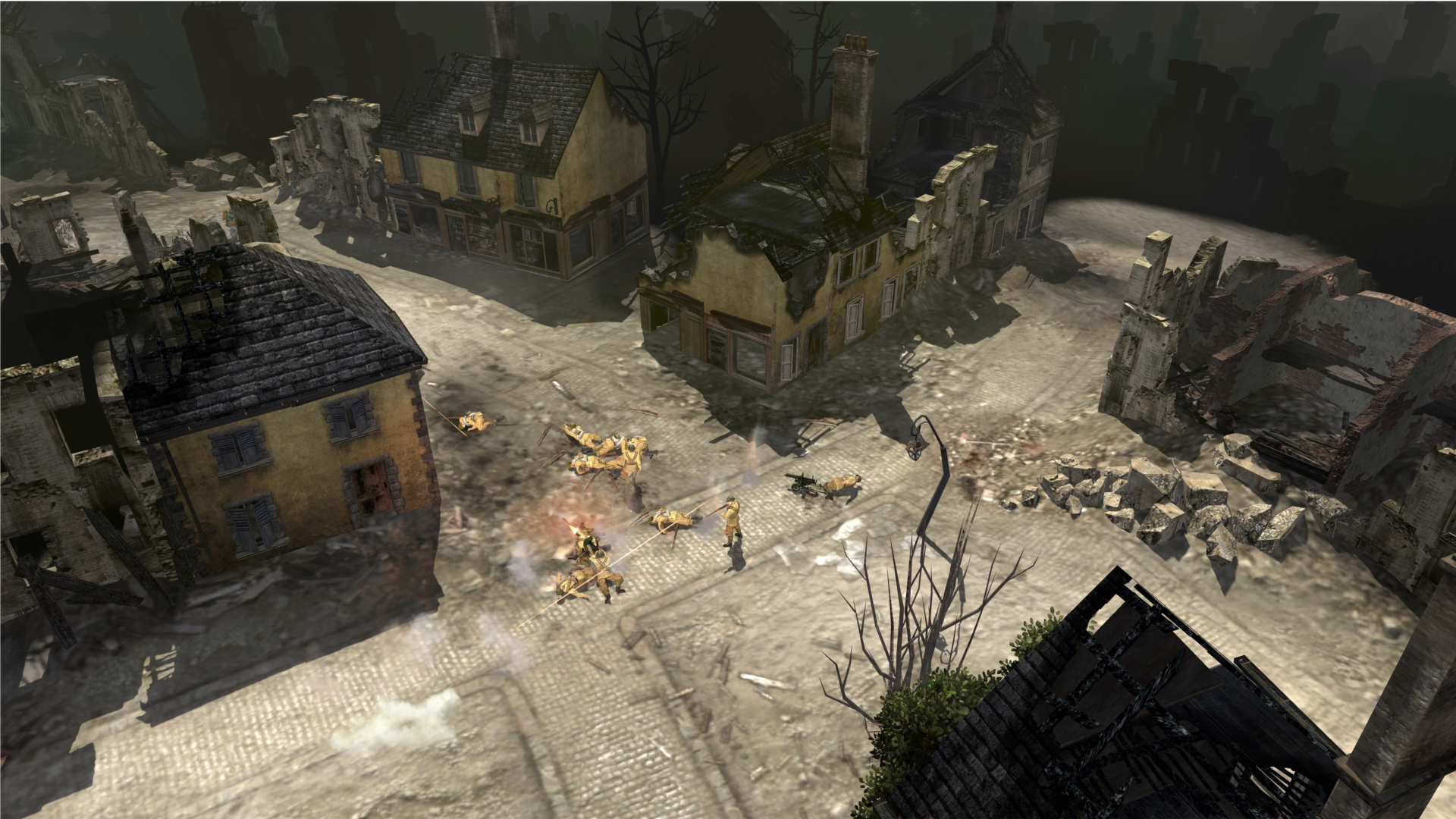
Company of Heroes 2 presents the Eastern Front in a dynamic fashion, telling stories through flashbacks. There are many unexpected events that push the player to operate simultaneously on several fronts. At some points the game is confusing, but it is something that fits well with a single player in this context. We eagerly await the open multiplayer beta that is set to start in a few short weeks.










 cblanco ★
cblanco ★  보드카 중대
보드카 중대  VonManteuffel
VonManteuffel  Heartless Jäger
Heartless Jäger 